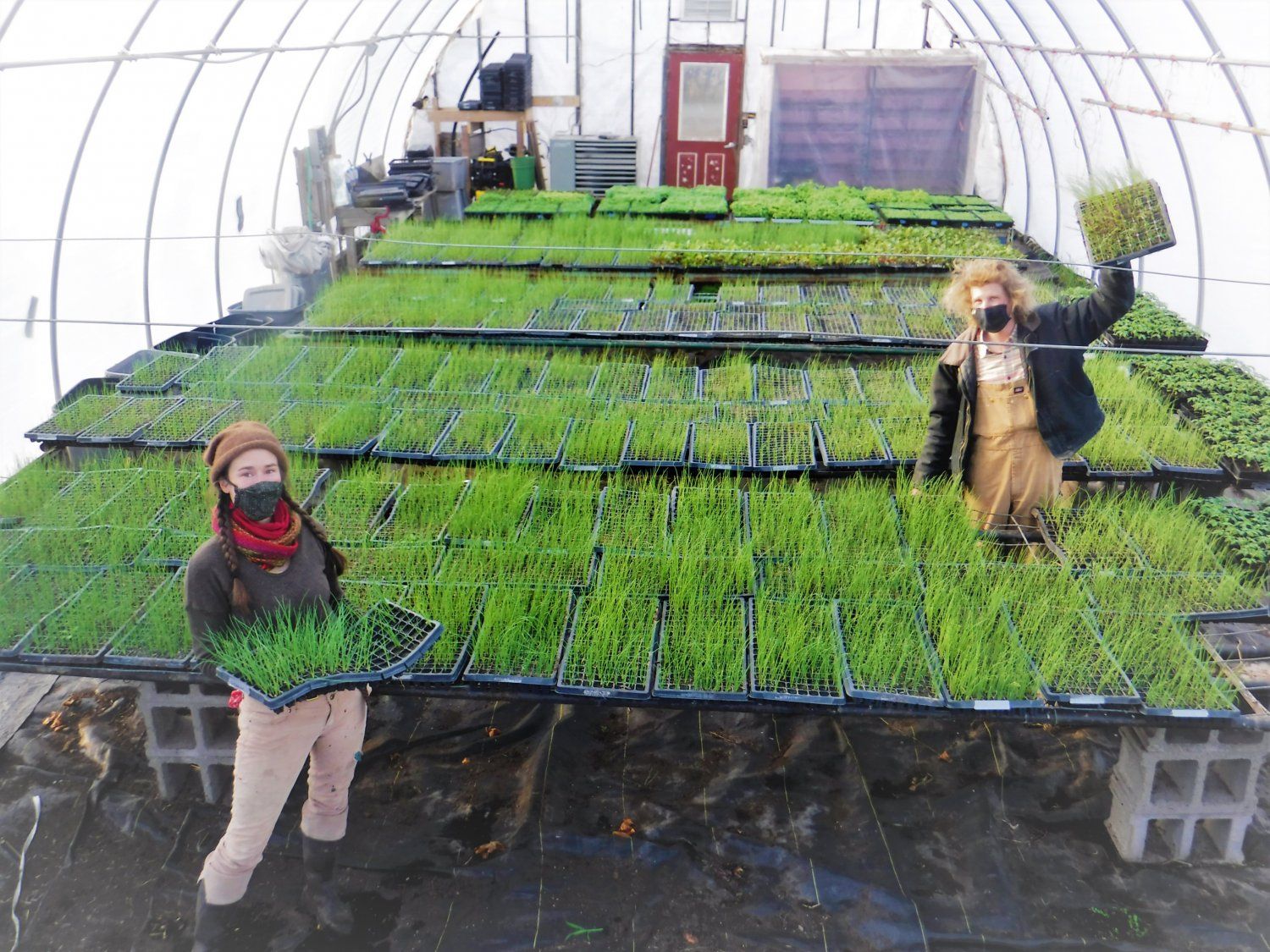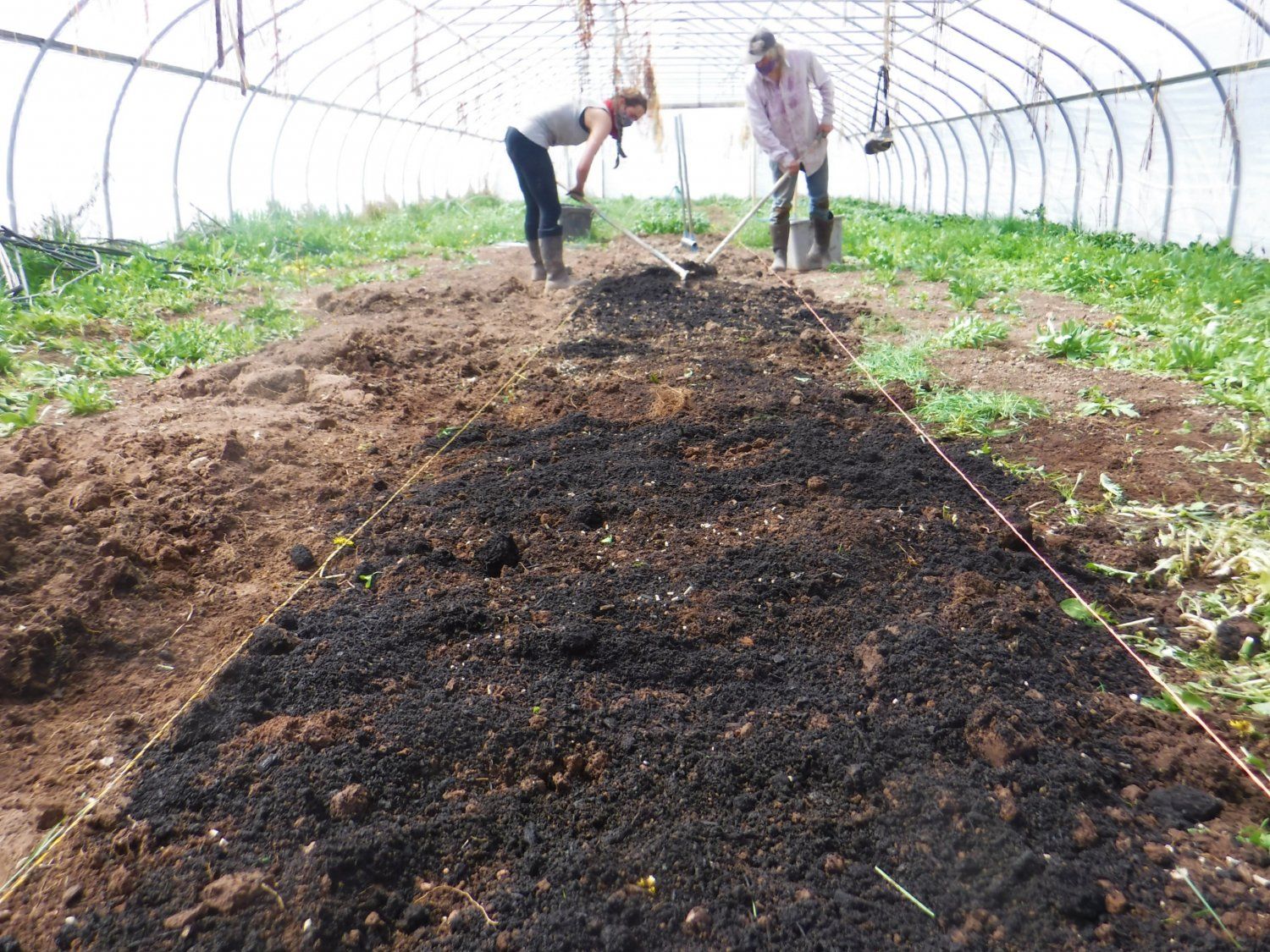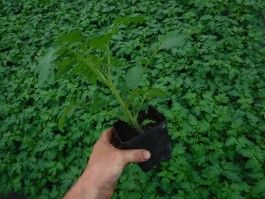Happy Mud Season! I know, I know, it's not my favorite season either, just be sure to keep those rubber boots handy.
Tulips Shares begin this week!
In addition to a host of meats and value added goods, all homegrown and handmade by the farmers and food producers in our Cooperative, here are a few notes on what kinds of veggies you will be able to purchase in the Farmstand Boxes headed out next week:
Last week, the microgreen sampler box was a smashing success - it sold out! This week, we've upped our game to have more microgreen sampler boxes available, so hopefully everyone who wants one is able to get one (picture below.) Remember, the exact varieties in a micro sampler box are "farmer's choice" and may vary based on availability, but it will always include 5 clamshells with at least 4 different varieties of our organic microgreens (but never any herbs - just "regular" micros.) I am also happy to announce that our spicy mustard micro mix is back in production and will be available this week as well. Spicy micro mix labels are still awaiting approval from our organic certifier, but regardless they should be a standard item available each week from here on out. With any luck, we'll have labels approved and printed in a week or two.
Other veggies available this week include sunchokes from Farmer Gil at Seasonally Sourced, one of our newest Bayfield Foods Cooperative member farmers (welcome Gil!), Yoman Farm potatoes from Farmer John, shallots from Farmer Rob at Twisting Twig, as well as our own Great Oak Farm carrots, onions, beets, basil, cilantro, and of course lots of fresh picked spinach. If anyone tells you eating produce seasonally here in the Northland can't be done all year long, you set 'em straight.

It's been a little soggy outside lately, so here at Great Oak Farm we're continuing to do "spring cleaning" in our hoophouses. Only one more week or so until our gorgeous tomato transplants are destined for their new hoophouse homes, so we have to get the hoops all spruced up before transplanting. Remember what they looked like back on March 26? What a difference a few weeks in the greenhouse can make!
This week we finished up transplanting beets and the first round of scallions (you can see that we have to get creative to fit them all on the tractor at one time), as well as seeded some beds of fresh spring spinach. Our overwintered spinach will continue to be productive for only a few more weeks, so we need to make sure we have a nice succession of plantings to keep that delicious spinach coming for as long as we are able. Once the days begin to get too long, the spinach plants that made it through the winter will want to bolt, or send up seed stalks, instead of spending energy making leaves. These new spinach seedings should help us bridge that gap and be ready just in time for the start of the summer CSA boxes.
Above, you can see Farmer Alex transplanting scallions in hoophouse 6. The other beds in there are marked out with rope, each bed has a single row of beets transplanted down the middle. When we transplant our tomatoes, we'll plant a row of tomatoes on either side of each row of beets - 2 rows of tomatoes in each bed. The beets will be growing fast between the rows of tomatoes, and will be harvested out just before the tomatoes take over the entire space of each bed. Timing is everything, but this allows us to utilize as much precious protected hoophouse space as possible.
Farmer Ryan (on the right) is holding one of the big broadforks we use to manually loosen the soil before transplanting. This hoophouse is our newest one, and the soil is hard in some places, so the fork takes a little more work to use. Next door, in hoophouse 2 (our oldest hoophouse) using the broadfork to loosen the soil is incredibly easy. Over the years, we've managed to improve the soil in there so much that I can easily stick my hand down into the soil up to my palm! The soil in hoophouse 2 has great structure as a result of our careful management, allowing plants to easily send their roots down deep to find nutrients, access water, and so on. It's also teeming with earthworms, who not only continue to loosen the soil but improve it with their "castings" (aka worm poop.) Farming can get a bad reputation for destroying the soil and the land over time. However, when the land is managed with the health of the soil in mind, we can use farming to actually BUILD soil health over time, making our land more productive with each passing year instead of wearing it out!
Below is a shot of our overwintered garlic coming up strong over in hoophouse 2, and our continued bed prep getting ready for more seedings of spinach in there. Look at that beautiful black dirt! And a photo bomb by our old Farmall Cub - we stick our little cultivating tractors (a Cub and an Allis G) in there for the winter to keep them out of the weather. They have been working on one farm or another since 1947 - a little extra TLC over the winter months should keep them running for another generation or two.
Farmer Ryan found a spring peeper hiding out in there too - hats off to our organic insect management team!
As the flats of scallions, etc leave the greenhouse and get transplanted, we've been busy seeding more new flats. This week we started flats and flats of the first of 7 succession plantings of broccoli, a few hundred early summer cabbage plants, and over 2000 fall brussels sprouts plants. We're thinking spring, summer, and fall already! That's over twice the amount of brussels we planted last year. If you like brussels as much as I do, keep your fingers crossed for good weather and you'll in for a treat later this year.
Just to try to quantify how many transplants we've seeded already, below is a picture of Farmer Ryan standing beside a pallet bag of our potting mix. Last month, we used up an ENTIRE pallet bag of potting mix. That's a lotta transplants!
Finally, if you are curious about how to prepare sunchokes, here's a recipe suggestion:
Roasted Sunchokes
1# sunchokes scrubbed and halved lengthwise
2 tablespoons olive oil - divided
½ teaspoon salt – divided
¼ teaspoon black pepper
8 garlic cloves
4 sprigs rosemary
Directions: Preheat oven to 375 degrees
Combine sunchokes, 1 tablespoon olive oil, 1/4 teaspoon salt, and pepper in a large bowl; toss well to coat. Heat a large cast-iron skillet over medium-high heat. Add remaining 1 tablespoon oil to pan; swirl to coat. Arrange sunchokes, cut side down, in pan; cook 5 minutes or until beginning to brown. Arrange garlic and rosemary evenly over sunchokes. Place pan in oven; roast at 375° for 40 minutes or until sunchokes are tender and deep golden. Sprinkle with remaining 1/4 teaspoon salt.
That's it from the farm this week. Thanks so very much for making us YOUR farmers!
In community,
Farmer Chris
Great Oak Farm









